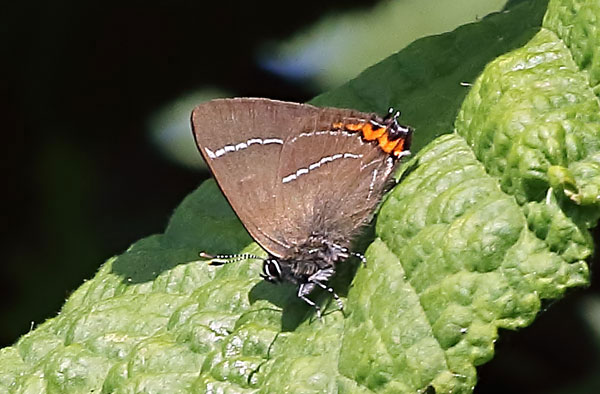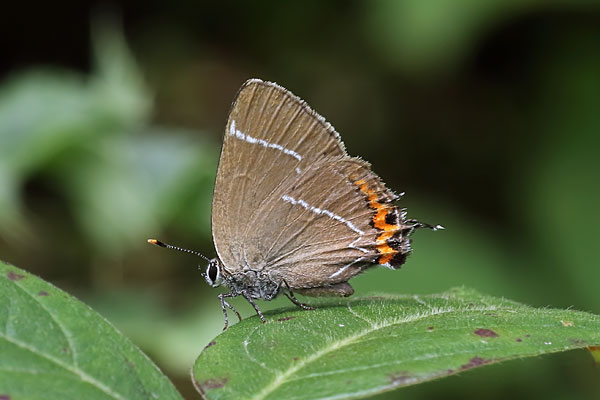White-letter Hairstreak (Satyrium w-album) | Species | ||||||||||||||||||||||||||||||||||||||||||||||||||||||||||||||||||||||||||||||||||||||||||||||||||||
 Male. Taken at Standlake Common, Oxon., on June 17th 2017. (© David Hastings) (1/400th sec at f14)  Female. Taken at Ardington, Oxon., on July 22nd 2020. (© David Hastings) (1/250th at f13) DescriptionFamily: Theclinae Wing span: 26 - 36 mm The W-shaped white line and the border of orange spots with black chevrons on the underside of the hindwings are the most characteristic features of this butterfly. Adults always rest with their wings closed. The sexes are similar, but the female has longer tails. It occurs through much of England and eastern Wales, but is absent from Scotland and Ireland. It is widespread and common in Europe. Colonies usually prefer mature, flowering elm trees, but elm suckers can also be used. There is one brood a year, with the adults emerging in late June or early July. The ovum is the over-wintering stage. The favourite larval foodplant is Wych Elm, but Common Elm, Smooth-leaved Elm and hybrids are also used. Adults feed on honeydew, and also on flowers such as Thistles, Hemp Agrimony, Majoram and Ragwort. White-letter Hairstreaks spend a lot of their time high up in trees, only occasionally coming down to feed on flowers. Endangered Earliest UK sighting: 17th June ; Latest UK sighting: 22nd July Sightings
| |||||||||||||||||||||||||||||||||||||||||||||||||||||||||||||||||||||||||||||||||||||||||||||||||||||

